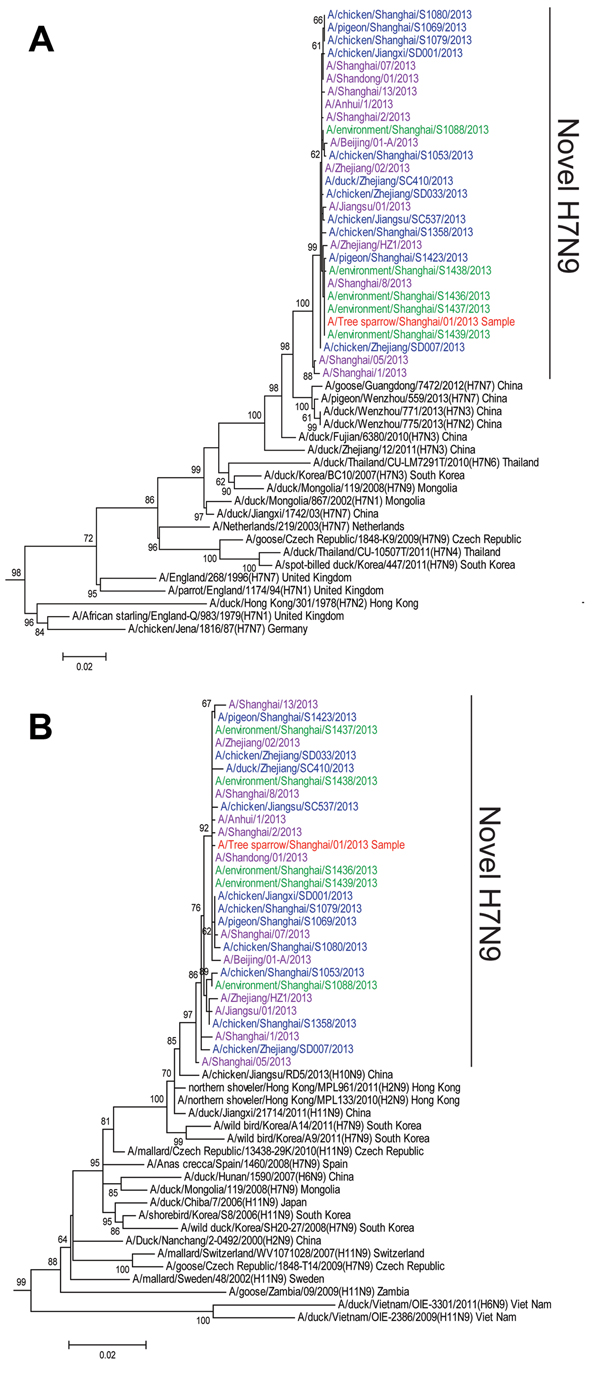Volume 20, Number 5—May 2014
Dispatch
Novel Avian Influenza A(H7N9) Virus in Tree Sparrow, Shanghai, China, 2013
Figure 2

Figure 2. Phylogenetic tree of the hemagglutinin (A) and neuraminidase (B) genes of influenza A(H7N9) virusesMultiple alignments were constructed by using the MUSCLE algorithm of MEGA software version 5.10 (www.megasoftware.net)Phylogenetic trees were constructed by using the neighbor-joining method with bootstrap analyses of 1,000 replicationsBootstrap values >60% are shown in the nodesSequences of human influenza A(H7N9) viruses are shown in purple, novel subtype H7N9 viruses from poultry (chickens, ducks, and pigeons) in blue, novel subtype H7N9 viruses from the environment in green, and novel subtype H7N9 viruses from wild birds in redScale bar indicates base substitutions per site.
1These authors contributed equally to this article.
Page created: April 17, 2014
Page updated: April 17, 2014
Page reviewed: April 17, 2014
The conclusions, findings, and opinions expressed by authors contributing to this journal do not necessarily reflect the official position of the U.S. Department of Health and Human Services, the Public Health Service, the Centers for Disease Control and Prevention, or the authors' affiliated institutions. Use of trade names is for identification only and does not imply endorsement by any of the groups named above.